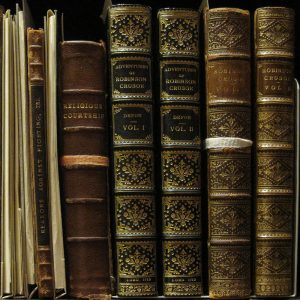If you’re in New York for the Antiquarian Book Fair this weekend and happen to stop by the Morgan Library & Museum, we hope you stop to smell the proses.
The Morgan has been engaged in a long-term project to research how the library might have smelled in 1906. Smell is deeply connected to memory and mood, but it’s easy to forget about odors when thinking about history and architecture in the abstract. As a collaboration between a Morgan manuscripts curator, a master perfumer, a historic preservation expert, and seven graduate students, this investigation encourages a creative, interdisciplinary approach to historic books and architecture. To imagine the smell of a rare book library over one hundred years ago, you have to consider how the atmosphere would have been affected by the technologies and transportations of a bygone era; who might have used the space, and how; what the furniture is made of and how it would have been cared for. And while we would probably all agree that the smell of old books is a distinctive one, in fact a book’s odor is influenced by so many different factors–its materials, its age, how it was stored, whether it has been repaired–that no two old books should smell alike.
You can read more about this experiment at Hyperallergic (courtesy of friend of the Rosenbach Allison C. Meier); if you want to get into the aromatic compounds of old book smell, Mental Floss reported on some chemical research several years ago. Personally, I’m inspired by the curious, poetic spirit of this investigation to reflect on how smell influences our memories and impressions of a place.
Can you conjure the memory of a bookstore or library from your past by thinking of the way it smelled?
What does our own rare book library smell like to individual visitors?
In particular, I’m reminded of one of my first memorable experiences as a new staffperson at the Rosenbach. I asked our librarian to unlock a few of the bookcases so that I could photograph the beautifully bound books for our Instagram. In the hall outside of the rare book library, she opened a case of first edition volumes by Daniel Defoe and encouraged me to breathe in. The case had a fine woodsy smell, like a cedar chest. The librarian explained that some of the books had been treated with birch tar, which was once used to preserve leather bindings, especially for Russian leather. The birch oils not only extended the life of leather but repelled insect invaders.
So when you see this particular shelf of books on your next visit, imagine them emanating the rich, spicy odor of fine wood.

